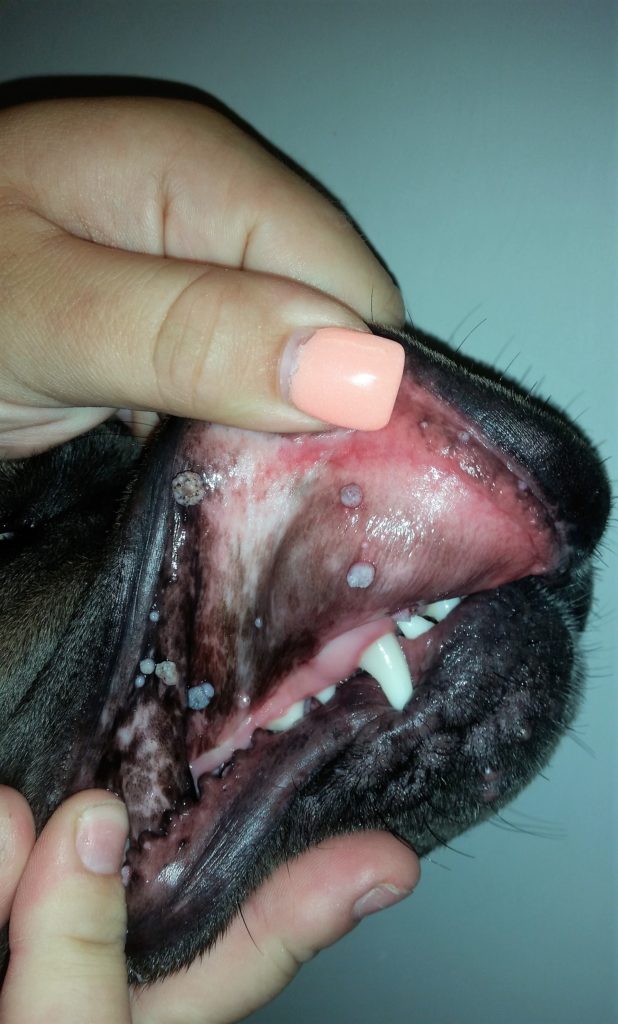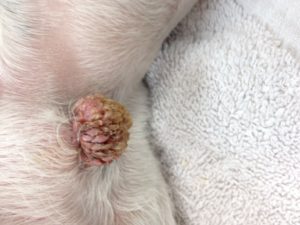Viral papillomatosis (warts) is a fairly common condition in young dogs. Irregular circular growths appear in the mouth and around the eyes. The growths can be fairly smooth like a human wart or possess tenticle like projections that remind me of tall blades of grass. In dogs, papillomatosis is most often caused by canine papilloma virus-1. The virus infects young dogs because of their immature immune systems and adult dogs who are immunosupressed. In young dogs, usually less than two years of age, papillomas are most common inside the mouth and around the eyes. On rare occasions, the papillomas may be found on the eyelids, between the toes and on the eyeball. In adults, the papillomas can be found anywhere. The first picture is of viral papillomas in the mouth of a young dog. The second picture is a papilloma on the neck of a adult dog. The papilloma developed after the adult dog was treated with steroids and cyclosporine which both suppress the immune system.
Canine papilloma virus-1 is transmitted by direct contact with an infective wart or by indirect contact by touching a contaminated surface. Most common sources are toys, bedding, collars, leashes, grooming tools and food bowls. The virus enters through damaged skin and papillomas appear within one to two months. People and other animals are not susceptible to this virus. CPV-1 only affects dogs.
Most young dogs will recover from this when their immune system matures and works to eradicate the virus. The papillomas will slowly degerate over about a two month period. Lesions that persist for longer periods of time should be biopsied to confirm the diagnosis of viral papillomatosis. Papillomas that interfere with eating or drinking may need removal. This is done with traditional surgery or cryotherapy. There is also a topical medication called imiquimod that can be applied to the papilloma or the drug azithromycin can be given orally for treatment. In really stubborn cases, papillomas can be removed and made into a vaccine to stimulate the dog’s immune system. This is a last resort because malignant tumors have occurred where the vaccine is injected.
In older dogs, the papillomas are surgically removed and sent in for analysis to confirm the diagnosis.
Source:
-Brooks, Wendy. ‘Viral Papillomas of Dogs’. VIN.com Published 09/10/2001, Reviewed and Revised 06/09/2017.

